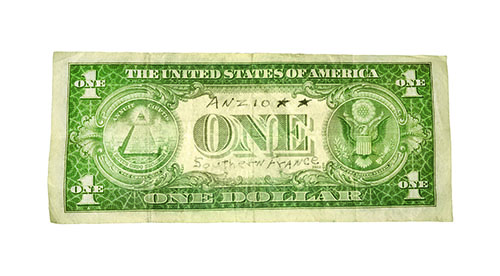
My wife came across this bill in 1983 when working as a bank teller. I had asked her to keep an eye open for any strange-looking currency and exchange it with her own. For the most part she would come home with two-dollar bills or old stuff. Then she showed me this bill. I have imagined it was signed by servicemen during the war; I hope someone can tell me more. —Arne Larsen, Pleasanton, Calif.
Your bill resembles something called a “short snorter”—a banknote, usually a dollar bill, signed (originally) by people who had traveled on the same aircraft or by individuals who attended the same event. The ritual started in the 1920s with Alaskan bush pilots, became popularized with the growth of aviation, and spread beyond aviation during World War II. Throughout the war, these signed notes appeared everywhere, from major conferences with world leaders to small military units on distant Pacific islands. Once a short snorter had been signed, the signatory could demand that the holder present the bill at any time; if he could not produce it, he owed the signatory a drink—a “short snort,” or slightly less-than a full pour. There were variations of the tradition, and it was all in fun, of course—but the result was a uniquely personal souvenir.
This bill differs from the traditional short snorter, as it appears to be an account of places one serviceman traveled. Without additional information it is difficult to ascertain in which branch he served, but it was likely the U.S. Navy. Eighteen cities are listed, from Gibraltar to Anzio—all coastal cities. On the bill’s reverse side are two invasion stars, with “Anzio” and “Southern France”—sites of amphibious invasions. It may well be that this navy serviceman had been aboard some type of landing craft or transport during 1944 in the Mediterranean Theater. —Josh Schick, Curator





